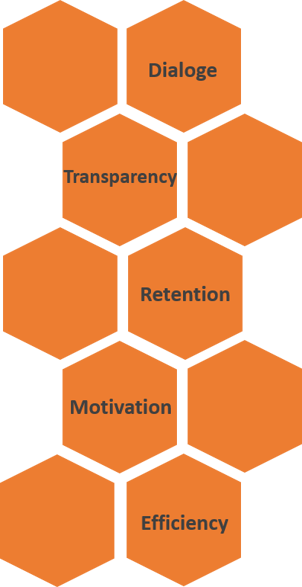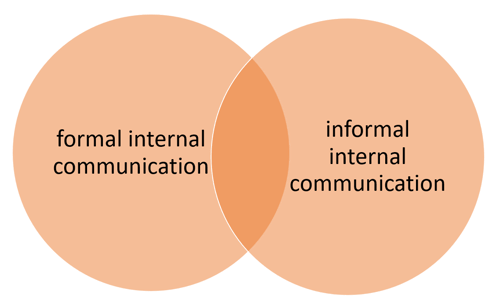
Internal communication with your own employees is an indispensable part of success. However, this dialogue is often not conducted professionally or is pushed back by acute issues such as sales problems or crisis management.
If you manage your internal communication continuously and systematically, you will achieve immense positive effects on the economic success of your company - just as bad or missing internal communication can turn even the smallest processes or procedures into big problems.
Experienced companies such as Thought Leader Systems can help you to unite the individual parts of your company into a large whole with professional internal communication and to build up internal thought leadership in your company.
The goal of change management in your company is to ensure the success of your business. The goal of your internal communication is to accompany this change internally with change communication in order to connect your own employees with each other and with the management team in such a way that their own work becomes a passion and the implementation of internal change becomes a common task.
The well-organized dialogue creates transparency and gives a feeling of belonging. If employees see themselves as an integral part of the company, the success of the company takes on a very personal note for them. Instead of salary or days off, good work and drive become motivators in themselves. One has a share in the success and together they manage to develop and strengthen the company. In this way the efficiency of the company as a whole is strengthened. Start by analysing your communication situation and setting clear goals for your internal communication.
Internal communication measures can be divided into two areas. Both areas require your full attention with regard to

Formal internal communication includes all the internal communication measures that are cascaded through your organization by management on multiple levels. Your internal communication lives from communication instruments such as company news, employee magazines, newsletters or videos in which you send important messages to create more transparency in the company.
Only when a company's management passes on important information to its teams can the management be trusted - and trust is the basis of a good working relationship.
Thought Leader Systems can help your company achieve Internal Thought Leadership when implementing important management concepts or change programs. Only if your formal internal communication will be motivating and credible for your employees, you can effectively implement change programs and win over the entire team of the company for the change process.
Your formal internal communication reaches across many levels of your organization - from senior management to all team members. It's not always easy to keep track of things and formulate a clear structure. This process of internal communication requires a lot of overview and understanding of the company hierarchy and the channels of your internal communication.
The path across the individual levels right down to the last employee can be an obstacle to the correct communication of information. All the more important is a targeted distribution of information with an individual medium for each level of your organization. A company magazine, for example, is a good way to reach everyone in the company with general news, while circulars are more likely to reach the management level and the management team.

Informal internal communication is like the "corridor radio" of the company. It is the everyday dialogue between employees, colleagues, teams and company locations. Private or professional - all conversations between employees together form the working atmosphere and shape the corporate culture.
Informal internal communication is a part of internal communication that is very difficult to shape. It is therefore important to support informal internal communication within the company in a targeted manner, to improve it and to provide occasions for a positive discussion with the company.
If you want to support informal internal communication in your company, first of all design your corporate messaging - i.e. your conversation impulses for informal internal communication - with formal instruments such as the employee magazine, special information bulletins or videos. Invite to internal dialogue and motivate to discuss your messages in discussion groups and bilateral talks among colleagues.
Your corporate messaging in a change management phase can thus be transported in the employee magazine and then brought to life through informal internal communication, for example to promote a common identity in the company after a merger or in an expansion phase.
This feeling of togetherness and cohesion is the basic building block of corporate culture. Especially in difficult phases such as a restructuring phase or a stagnation phase, you can only minimize internal conflicts by using internal communication to build up internal opinion leadership - or internal thought leadership.
Unpleasant issues such as bullying or the exclusion of individual employees can occur in any company. Official measures to combat such problems are often implemented without tact or real understanding of the situation.
Thought Leader Systems can help you, as a partner for holistic internal communication, to design the framework for your company's formal internal communication in such a way that good informal communication can emerge. In this way, you can make a targeted contribution to creating an optimal working atmosphere for each individual in the company.
About TLS
Contact
Newsletter